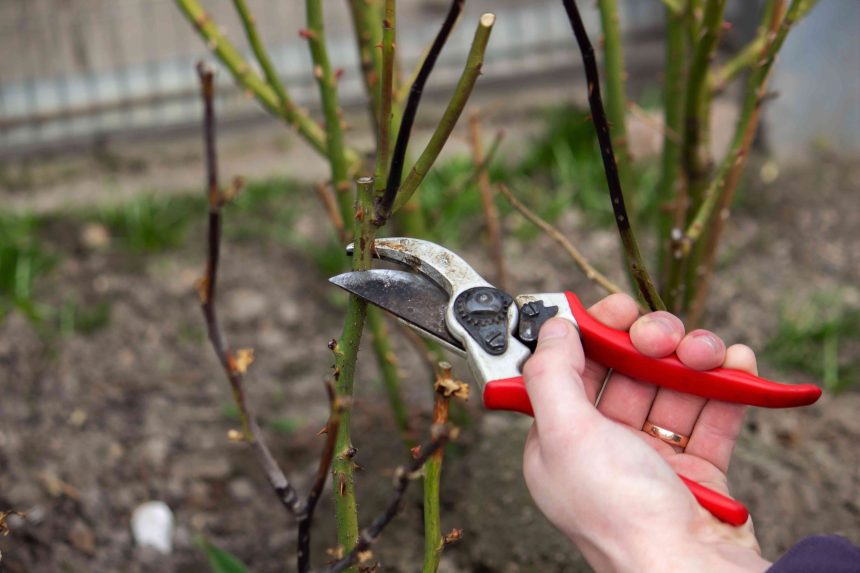If you’ve spent any time gardening, then you’ve likely heard of the term “pruning” before. This beneficial garden maintenance task is imperative for keeping your beautiful, hard-earned rose bush alive year after year. By skipping the pruning process, you run the risk of a less-than-healthy bush that can quickly become overtaken with disease, poor air circulation, and less blooms.
But don’t let this take frighten you. Pruning is a fairly easy process that provides a major reward. You just need to set a date in your calendar to pull our your garden shears and get to work sometime in the late winter or early spring.
Ready to see your rose bush come alive this year? Follow the steps in this guide to pruning your rose bush for healthy, vibrant blossoms in the following months.
Understanding Rose Pruning
It’s true that pruning your rose is vital for plant health, but it’s also important to enhance the overall aesthetics. For the health benefits, pruning roses gets rid of any diseased plants and improves the air circulation needed for your blooms to grow abundantly and vibrant in color. Because you’re doctoring up your bush by removing threatening stems, it’s encouraging the plant to produce more blooms and decrease any present diseases from spreading.
But while you’re at it removing the disease, you’re also improving the aesthetics by shaping your plants to your desired balance. You’re removing unwanted growth that could overtake your garden and keeping the visual neat, which creates a pleasing design.
Before you take shears to your rose bush and start whacking away, here are a few tips to follow based on the type of roses you have planted:
- Climbing roses: Prune in late winter or early spring. Cut mostly the lateral stems.
- Floribunda and hybrid tea roses: Prune in early spring. Cut the healthiest stems back 4-6 inches and weaker ones 2-4 inches.
The Best Time To Prune Roses
Generally, the best time to prune your roses is in late winter or early spring after the last frost. This is the ideal time to prune since it’s right before new growth starts to happen. However, there are a few climate considers to note so you prune at the proper time based on your region:
- Pacific Northwest: February & March
- Northeast: March & April
- Midwest: March & April
- Southeast: January
- Southwest: January & February
- South Central & Lower Midwest: February
Factors That Indicate It’s Time To Prune
Other than following the general guideline for your climate, there are other factors that indicate it’s time to prune your roses. One of those is when you start to see the plant budding or leafing. This means active growth is starting to occur, so pruning now further encourages healthy and bountiful growth.
Another visible indicator is the last frost. Frost stunts plant growth so if you prune too early and another frost hits, your roses will not bloom properly since the extreme cold will damage them.
Post-Pruning Care
After you’ve pruned your roses, the work doesn’t stop. There are a few other maintenance tasks you should follow to ensure your rose bush grows beautifully within the following weeks.
The first step is cleaning up the diseased plants you cut and sanitizing your tools since this prevents diseases from spreading to the healthier stems. You should also fertilize and feed your rose bush to give it proper nutrients for a healthy growth, while monitoring the bush for disease or pests that will need to be addresses immediately for the best chance at survival.
Common Mistakes & Tips
While pruning is a good thing, one common mistake beginner gardeners make is pruning too much. If you remove too much from the plant, this can cause stress that prevent the bush from blooming to it’s fullest potential. Follow the “one-third rule” that states you should never prune more than one-third of the bush at a time.
To accurately prune your rose bush to ensure proper shape and structure, make sure you cut a diagonal 45-degree cut above an outward facing bud. Following this rule as you prune will ensure healthy plant growth for blooms that are equally stunning!






